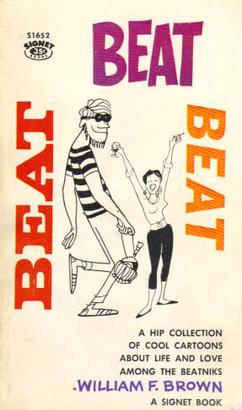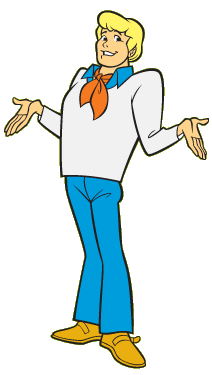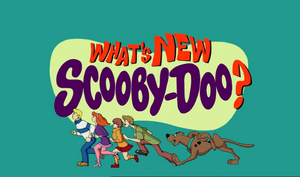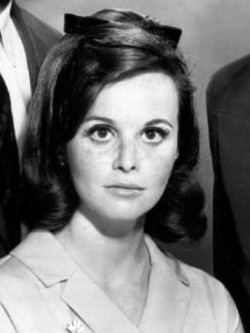
Scooby-Doo is an American media franchise owned by Warner Bros. Entertainment and created in 1969 by writers Joe Ruby and Ken Spears through their animated series, Scooby-Doo, Where Are You!, for Hanna-Barbera. The series features four teenagers: Fred Jones, Daphne Blake, Velma Dinkley, and Shaggy Rogers, and their talking Great Dane named Scooby-Doo, who solve mysteries involving supposedly supernatural creatures through a series of antics and missteps, while traveling using a brightly colored van called the "Mystery Machine". The franchise has several live-action films and shows.

Beatniks were members of a social movement in the mid-20th century, who subscribed to an anti-materialistic lifestyle. They rejected the conformity and consumerism of mainstream American culture and expressed themselves through various forms of art, such as literature, poetry, music, and painting. They also experimented with spirituality, drugs, sexuality, and travel. The term "beatnik" was coined by San Francisco Chronicle columnist Herb Caen in 1958, as a derogatory label for the followers of the Beat Generation, a group of influential writers and artists who emerged during the era of the Silent Generation's maturing, from as early as 1946 to as late as 1963, but the subculture was at its most prevalent in the 1950s. The name was inspired by the Russian suffix "-nik", which was used to denote members of various political or social groups. The term "beat" originally was used by Jack Kerouac in 1948 to describe his social circle of friends and fellow writers, such as Allen Ginsberg, William S. Burroughs, and Neal Cassady. Kerouac said that "beat" had multiple meanings, such as "beaten down", "beatific", "beat up", and "beat out". He also associated it with the musical term "beat", which referred to the rhythmic patterns of jazz, a genre that influenced many beatniks.

Gilligan's Island is an American sitcom created and produced by Sherwood Schwartz. The show's ensemble cast features Bob Denver, Alan Hale Jr., Jim Backus, Natalie Schafer, Tina Louise, Russell Johnson, and Dawn Wells. It aired for three seasons on the CBS network from September 26, 1964, to April 17, 1967. The series follows the comic adventures of seven castaways as they try to survive on an island where they are shipwrecked. Most episodes revolve around the dissimilar castaways' conflicts and their unsuccessful attempts to escape their plight, with the ship's first mate, Gilligan, usually being responsible for the failures.

Robert Osbourne Denver was an American comedic actor who portrayed beatnik Maynard G. Krebs on the 1959–1963 series The Many Loves of Dobie Gillis and Gilligan on the 1964–1967 television series Gilligan's Island.

Franklin Wendell Welker is an American voice actor. He began his career in the 1960s, and holds over 860 film, television, and video game credits as of 2023, making him one of the most prolific voice actors in history. With his films earning a total worldwide box-office gross of $17.4 billion, he is also the third-highest-grossing actor as of 2011.

The Many Loves of Dobie Gillis is an American sitcom starring Dwayne Hickman that aired on CBS from September 29, 1959, to June 5, 1963. The series was adapted from the "Dobie Gillis" short stories written by Max Shulman since 1945, and first collected in 1951 under the same title as the subsequent TV series, which drew directly on the stories in some scripts. Shulman also wrote a feature-film adaptation of his "Dobie Gillis" stories for Metro-Goldwyn-Mayer in 1953, titled The Affairs of Dobie Gillis, which featured Bobby Van in the title role.

Daphne Blake is a fictional character in the Scooby-Doo franchise. Daphne, depicted as coming from a wealthy family, is noted for her beauty, red hair, purple heels, fashion sense, and her knack for getting into danger, hence the nickname "Danger-Prone Daphne".

Norville "Shaggy" Rogers is a fictional character and one of the main characters in the Scooby-Doo franchise. He is an amateur detective, and the long-time best friend of his lovable dog, Scooby-Doo.

Velma Dinkley is a fictional character in the Scooby-Doo franchise. She is usually seen wearing a baggy orange turtleneck sweater, a short red pleated skirt, knee high socks, Mary Jane shoes, and a pair of black square glasses, which she frequently loses and is unable to see without. She is seen as the "brains" of the group.

Dwayne Bernard Hickman was an American actor and television executive, producer and director, who worked as an executive at CBS and had also briefly recorded as a vocalist. Hickman portrayed Chuck MacDonald, Bob Collins' girl-crazy teenaged nephew, in the 1950s The Bob Cummings Show and the title character in the 1960s sitcom The Many Loves of Dobie Gillis. He was the younger brother of actor Darryl Hickman, with whom he appeared on screen. After retirement, he devoted his time to creating personalized paintings.

Frederick Herman "Fred" Jones is a fictional character in the American animated series Scooby-Doo, leader of a quartet of teenage mystery solvers and their Great Dane companion, Scooby-Doo. Fred has been primarily portrayed by voice actor Frank Welker since the character's inception in 1969.

What's New, Scooby-Doo? is an American animated television series produced by Warner Bros. Animation for Kids' WB. It is the ninth incarnation of the Scooby-Doo franchise that began with Scooby-Doo, Where Are You! and the first Scooby-Doo series in a decade, since A Pup Named Scooby-Doo ended in 1991 and the first since both the foreclosure of Hanna-Barbera studios and William Hanna's death in 2001.

A Pup Named Scooby-Doo is an American animated mystery comedy series produced by Hanna-Barbera. It is the eighth incarnation of the studio's Scooby-Doo franchise and depicts younger versions of the title character and his human companions as they solve mysteries, similar to the original television series. The series was developed by Tom Ruegger and premiered on September 10, 1988, airing for three seasons on ABC as well as during the syndicated block The Funtastic World of Hanna-Barbera until August 17, 1991.

Lynn Loring was an American actress and television and film producer.
Gilligan's Wake (ISBN 0-312-29123-X) is a 2003 novel, loosely based on the 1960s CBS sitcom Gilligan's Island, written by Esquire film and television critic Tom Carson. The title is derived from the title of the TV show and Finnegans Wake, the final work of Irish novelist James Joyce. The novel was published subsequently as a paperback in 2004 (ISBN 0-312-31114-1).
Zelda K. Gilroy, portrayed by Sheila Kuehl, is a character from the American sitcom The Many Loves of Dobie Gillis, which originally aired on CBS from 1959 to 1963. A teenage girl who was bright in academics and excelled in athletics, Zelda was smitten with the handsome, clean-cut teenager Dobie Gillis, played by Dwayne Hickman, who had his romantic sights set on more popular girls. Most of these, however, shunned him for various reasons. Zelda was always there for Dobie and his friend Maynard G. Krebs, portrayed by Bob Denver.
This is a list of episodes from the first season of The Many Loves of Dobie Gillis. This season of the series explores Dobie Gillis' life as a junior at Central High School, and is the only season of the series to feature Tuesday Weld and Warren Beatty among the cast.

This is a list of episodes from the second season of The Many Loves of Dobie Gillis; the series' on-screen title was shortened to Dobie Gillis starting with this season.
This is a list of episodes from the third season of The Many Loves of Dobie Gillis; the series' on-screen title was shortened to Dobie Gillis during this season.
This is a list of episodes from the fourth and final season of The Many Loves of Dobie Gillis; the series' title was changed to Max Shulman's Dobie Gillis during this season.















